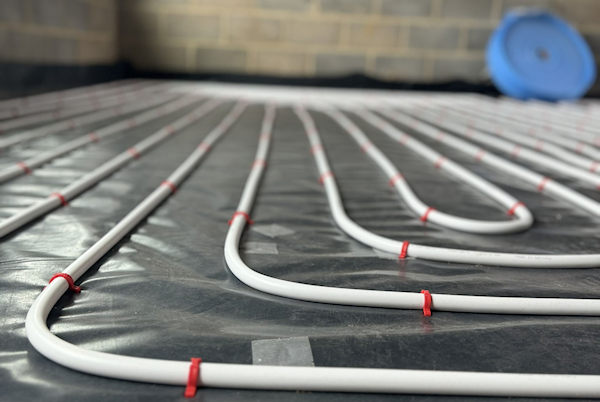
Renovation and decarbonisation: Do they work hand in hand?
With the UK heating industry looking to meet a net-zero carbon goal by 2050 and move to renewable energy sources, the requirement for ultra-low temperature water emitters is becoming more and more needed. This article looks at whether renovation and decarbonisation work hand in hand.
One of the biggest challenges in meeting these goals is the UK housing stock. According to BRE, the UK has the oldest housing stock in Europe. With 38% of homes pre-dating 1946! Now, simply changing a boiler to a heat pump in homes such as these will never work, so what are the considerations?
Insulation
The first stop has to be insulation. Most homes built during and before the 1920s have no insulation. Most of an old house’s heat is lost through the roof (which is the easiest thing to insulate), but walls and windows are something else to consider. However, you have to be very careful when insulating older homes as they were often built with 9″ solid brick walls. As a result, modern insulation can cause issues with condensation if there is insufficient ventilation. The floor is also a source of heat loss, and this area is often seen as the most invasive to insulate as it can mean digging up the floor. There are options such as low insulated panels (like VIP boards).
Heat Loss Assessments
It’s vital to ensure that a heat loss assessment is carried out after the insulation is installed. Far too often, this assessment is skipped, and without knowing the ins and out of the heat losses, you will be running blind. This means that you cannot get an accurate loss for your emitter to meet.
The Heat Emitter
There are three main options when it comes to the heat emitter.
Firstly, you can oversize and select triple panel radiators. This is the cheapest and easiest option. However, because of the higher heat losses, it can mean the radiators become huge! Especially at say 35°C water temperature.
The second option is forced air convectors. These use fans to push the heat out of the emitter, meaning they are much smaller, but over time these can break and become noisy.
The third option is underfloor heating. There are many types of UFH panels and companies out there now, all claiming massive outputs, but a lot of the time, no matter the system, UFH may not be the answer.
The UFH system must be correctly designed, and you need to trust your supplier not to just “sell you a system”. A golden rule to remember if any output is said to be over 100w/m², then don’t believe it. This type of output goes against the UFH standards that protect people and systems. The best system currently on the market is an encapsulated renovation screed system, such as the Multipipe Altis Flow. By encasing the pipe in screed, you get the best contact in a highly conductive product. Altis Flow is excellent for retrofit scenarios as it only needs an 18mm screen. Below you will find performance based on the typical retrofit solution.
 | |
| System: | Lightweight EPS panel |
| Running Temperature: | 35-30°C |
| Floor covering: | Tiles directly applied to the board |
| Projected output: | 42w/m² |
 | |
| System: | Altis Flow |
| Running Temperature: | 35-30°C |
| Floor covering: | Tiles directly applied to the board |
| Projected output: | 82w/m² |
A 40w/m² increased output is huge and could mean UFH can be fitted into an old home with a heat pump after all.











